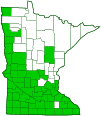Aunt Lucy
(Ellisia nyctelea)
Conservation • Wetland • Description • Habitat • Ecology • Use • Distribution • Taxonomy
Description |
||
Aunt Lucy is a 6″ to 18″ tall, erect, annual forb that rises on multiple stems from a large, fleshy taproot. The stems are weak, angled, and usually branched. They are erect or recline on the ground with only the tip ascending. They are fleshy, hollow, pale green to pale purple, and covered with a whitish, waxy bloom (glaucous). They are sparsely covered with straight, stiff, appressed hairs and sometimes also have some stiff, bristly hairs. The lower leaves are opposite and the upper leaves are alternate. The leaf blades oblong to egg-shaped in outline, are up to 2⅜″ long, and up to 2″ wide. They are deeply cut into a terminal lobe and 3 to 6 pairs of lateral lobes (pinnatifid). They are on stout, flattened, up to ¾″ long leaf stalks that have bristly hairs near the base. The lobes are narrow and inversely lance-shaped. They may be opposite or alternate. They are untoothed or have a few large teeth or lobes. The main axis of the leaf blade (rachis) is winged. The upper and lower surfaces are hairy. The inflorescence is a solitary flower rising on a short stalk from a leaf axil or from the stem opposite a leaf. The flower stalk elongates to about 2″ in fruit. The flowers are about ¼″ in diameter. There are 5 green sepals, 5 white to pale blue petals, 5 stamens with brown anthers, and a single style. The sepals are united at the base into a short calyx tube then separated into 5 spreading, hairy, lance-shaped, pointed, about 5 ⁄16″ long and ⅛″ wide lobes. The sepals are as long or longer than the corolla. The petals are united at the base for over half of their length into a ⅛″ long corolla tube then separated into 5 spreading, rounded lobes. They often have tiny purple specks. The stamens do not project beyond the corolla tube. The style is split at the tip into two stigmas. The fruit is a green, fleshy, hairy, drooping, spherical, 3 ⁄16″ to ¼″ in diameter capsule. It is subtended by the persistent calyx with 5 enlarged, widely spread lobes. The fruit contains 4 seeds. |
||
Height |
||
6″ to 18″ |
||
Flower Color |
||
White to pale blue |
||
Similar Species |
||
Habitat |
||
Dry to moist. Deciduous woodlands, thickets, flood plains, stream banks, disturbed sites. Partial sun or light shade. |
||
Ecology |
||
Flowering |
||
May to June |
||
Pests and Diseases |
||
|
||
Use |
||
|
||
Distribution |
||||
|
Sources |
|||
| 2/17/2023 | ||||
Nativity |
||||
Native |
||||
Occurrence |
||||
Locally common |
||||
Taxonomy |
|||
| Kingdom | Plantae (Plants) | ||
| Subkingdom | Pteridobiotina | ||
| Phylum | Tracheophyta (Vascular Plants) | ||
| Class | Magnoliopsida (Dicots) | ||
Order |
Boraginales (borages) | ||
Family |
Boraginaceae (borage) | ||
| Subfamily | Hydrophylloideae (baby blue eyes, phacelias, and waterleaves) | ||
Genus |
Ellisi (Aunt Lucies) | ||
Subordinate Taxa |
|||
|
|||
Synonyms |
|||
Ellisia ambigua Ellisia nyctelea var. coloradensis Ipomoea nyctelea Nyctelea nyctelea |
|||
Common Names |
|||
Aunt Lucy ellisia false babyblueeyes waterpod water-pod |
|||
Glossary
Axil
The upper angle where a branch, stem, leaf stalk, or vein diverges.
Calyx
The group of outer floral leaves (sepals) below the petals, occasionally forming a tube.
Corolla
A collective name for all of the petals of a flower.
Glaucous
Pale green or bluish gray due to a whitish, powdery or waxy film, as on a plum or a grape.
Pinnatifid
Deeply cut, more than half way to the midrib but not to the midrib, into lobes that are spaced out along the midrib; the lobes do not form separate leaflets.
Rachis
The main axis of a compound leaf, appearing as an extension of the leaf stalk; the main axis of an inflorescence.
Wing
A thin, flat, membranous, usually transparent appendage on the margin of a structure.
Visitor Photos |
|||||
Share your photo of this plant. |
|||||
| This button not working for you? Simply email us at info@MinnesotaSeasons.com. Attach one or more photos and, if you like, a caption. |
|||||
|
|||||
MinnesotaSeasons.com Photos |
|||||
Habitat |
|||||
 |
|||||
Plant |
|||||
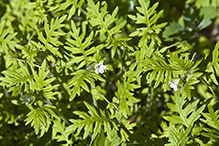 |
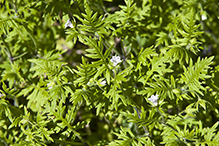 |
||||
Leaves |
|||||
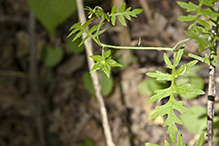 |
|||||
Fruit |
|||||
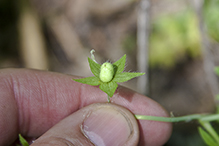 |
|||||

Slideshows |
||

Visitor Videos |
|||
Share your video of this plant. |
|||
| This button not working for you? Simply email us at info@MinnesotaSeasons.com. Attach a video, a YouTube link, or a cloud storage link. |
|||
Other Videos |
|||

Visitor Sightings |
|||||
Report a sighting of this plant. |
|||||
| This button not working for you? Simply email us at info@MinnesotaSeasons.com. Be sure to include a location. |
|||||
|
|||||
MinnesotaSeasons.com Sightings |
|||||

|
Created: Last Updated: © MinnesotaSeasons.com. All rights reserved. |
